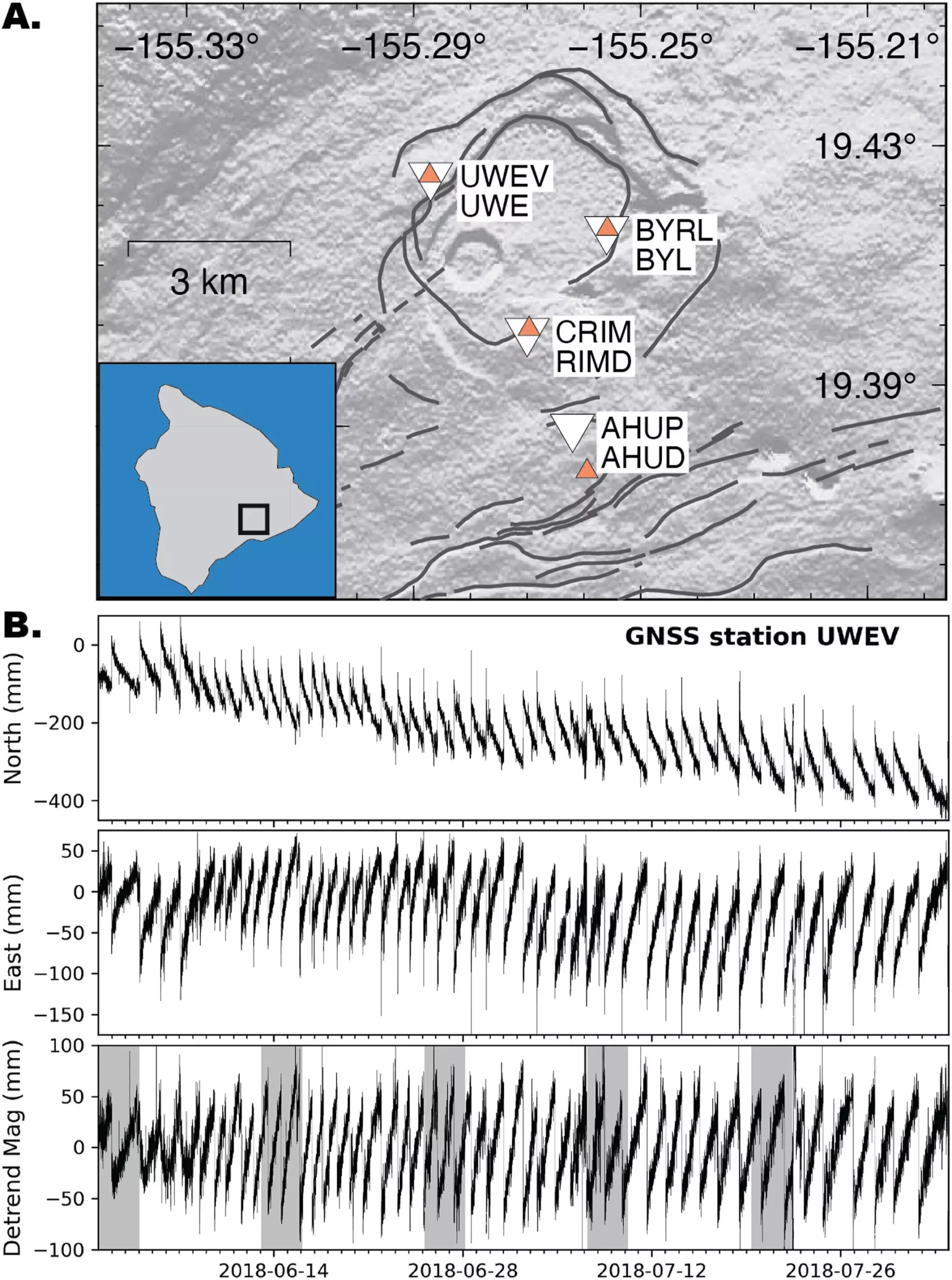Predicting earthquakes has been a longstanding challenge for scientists around the world. However, a recent breakthrough at Los Alamos National Laboratory using the power of machine learning has shown promising results in detecting hidden signals that precede seismic events. This groundbreaking research, led by seismologist Christopher Johnson, has significant implications for understanding earthquake hazards and improving early warning systems.
The study, published in the journal Geophysical Research Letters, focused on detecting warning signals in a stick-slip fault system at the Kīlauea volcano in Hawaii. By analyzing seismic data recorded by the U.S. Geological Survey’s Hawaiian Volcano Observatory, the research team was able to identify unique patterns in the data that indicated the loading cycle of each event. This hidden signal, akin to a fingerprint, appeared continuous prior to a detectable large ground movement, providing valuable insights into the fault’s behavior.
Traditionally, continuous acoustic or seismic emissions were disregarded as noise in earthquake data. However, Los Alamos researchers discovered that these signals contain rich information about the physical properties of a fault, such as displacement, friction, and thickness. By applying machine learning algorithms to analyze these signals, scientists were able to predict the timing of fault failures and gain a deeper understanding of the fault’s current state in the loading cycle.
The research conducted at Los Alamos marks the first successful application of machine learning to seismogenic faults, where earthquakes originate. By studying the sequence of highly active stick-slip events at the Kīlauea volcano, researchers were able to estimate ground displacement and predict the time to the next fault failure. This innovative approach has the potential to revolutionize earthquake prediction and mitigation efforts around the world.
While the results of this study are promising, there are still challenges to overcome in the field of earthquake prediction. Stick-slip faults, like the one at the Kīlauea volcano, pose a unique threat due to their ability to generate strong ground motions quickly. Predicting such events remains a complex task that requires further research and refinement of machine learning models.
The use of machine learning in detecting hidden signals preceding earthquakes represents a significant advancement in seismic research. By harnessing the power of artificial intelligence, scientists are unlocking new insights into fault behavior and improving our ability to forecast seismic events. The findings from the study at Los Alamos National Laboratory pave the way for more accurate and reliable earthquake prediction methods, ultimately enhancing global efforts to prepare for and mitigate the impact of these natural disasters.


Leave a Reply